by James Estrin New York Lens Blog
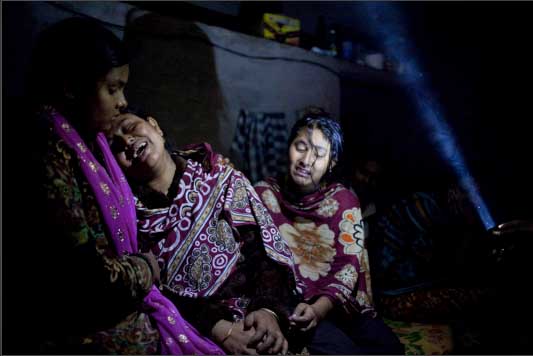
Taslima Akhter was overcome with emotion when she arrived at the Tazreen Fashions garment factory on the outskirts of Dhaka, Bangladesh, on Sunday evening, four hours after?fire tore through the building. She watched firefighters battle the blaze ? which killed at least 112 people?? as throngs of workers and family members waited to see if their loved ones?had survived.
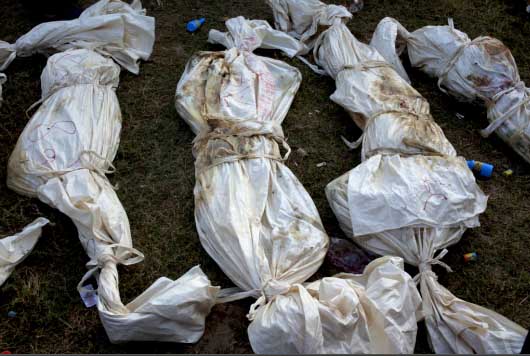
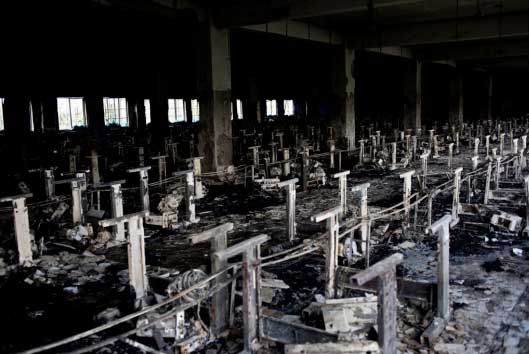
She was overwhelmed, but not surprised. Ms. Akhter had photographed four other fires in Bangladeshi garment factories in which scores of workers, mostly women, had died. She has devoted her life ? and her photography ? to championing the rights of workers who toil under dangerous conditions.
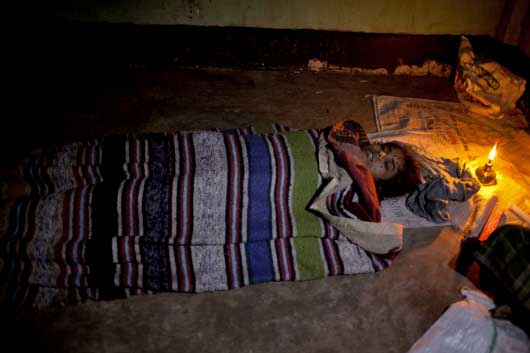
?It?s not an easy experience for me,? she said. ?But I took photos because they work dawn to dusk for very little money and their?lives are considered to be so cheap, worth nothing.?
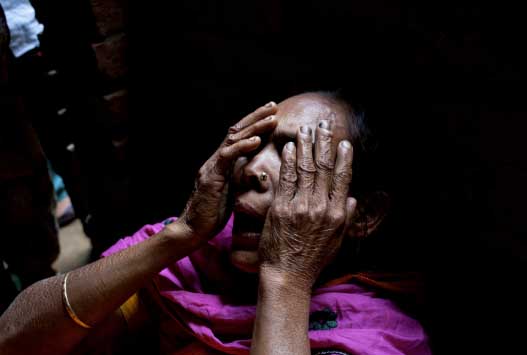
On Sunday night, after taking photographs at the factory, Ms. Akhter went to the workers? barracks and houses?next door, where she met Julekha Begum, who had lost her husband, Abdul Bari, a sewing machine operator.
?Julekha was crying and said that her husband called her when the fire broke out in the factory and said, ?Pardon me, my dear, I am going to die,? ? Ms. Akhter said.
When Ms. Akhter entered the factory ruins the next morning, firefighters were still hauling out corpses in white body bags. She could feel the heat of the fire as she passed the lone staircase in the nine-story building. She saw many broken windows, which workers tried to leap through to save their lives.
?I imagined how the workers passed the last moments of their life,? she said. ?How did they feel? When the fire was crawling, when they tried, but found no way to save their life, what their feeling was? Many questions were haunting me and I felt so hopeless.?
She later went to a nearby school that had become a makeshift morgue, where more than a hundred victims were laid out in the corridors while thousands of desperate people searched for their relatives? remains.

?Many couldn?t find them because most of the bodies were charred, like coal, or were only skeletons so?they had nothing to recognize,? she said.
Ms. Akhter was?featured on Lens?in August 2011 after she received a?Magnum Foundation scholarship?that brought her to New York University?s?Tisch School of the Arts?to study photography and human rights. Previously, she had studied photojournalism at the?Pathshala South Asian Media Academy?in Dhaka and completed a master?s degree in philosophy at the University of Dhaka.
Her involvement in human rights and labor issues led her to photography.?Shahidul Alam, who started the Pathshala South Asian Media Academy as well as the?Drik?photo agency, said Ms. Akhter?s work and concerns echoed that of?Lewis Hine.
?She has the level of trust among the workers, and unequaled access that really allows her to be a fly on the wall,? Mr. Alam said.
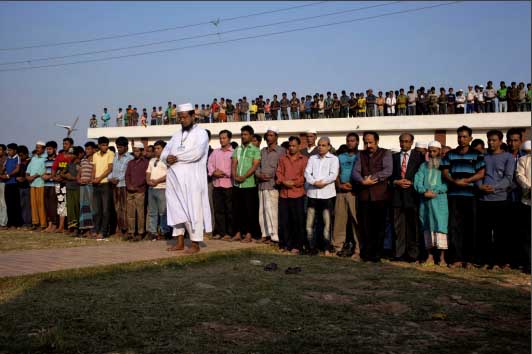
Bangladesh is the world?s second-largest exporter of clothing after China and has more than three million garment workers, most of them women. More than 500 people have died in factory fires since 2006, according to?Clean Clothes Campaign, an antisweatshop advocacy group.
Safety conditions are notoriously poor in Bangladeshi factories. Many have only one exit and,?like the 1911?Triangle factory fire?in New York, doors are often locked or blocked.?The Tazreen Fashions factory was making apparel for several American and British companies?including Walmart.
Ms. Akhter says that the responsibility for the work conditions extends to American businesses and ultimately the consumers, who enjoy cheap prices from equally cheap labor. In Bangladesh, she said, workers typically earn about $37 a month. Even the local factory owners? earnings pale in comparison to what the foreign companies reap.
?The story is all the same,? she said. ?Workers were locked behind the iron gate and did not get any escape from the fire. Nobody knows the real number of victims. Many are still missing but their bodies not found. They were turned into ashes.?
Please Retweet #garments, #tazreen #bangladesh #BGMEA





